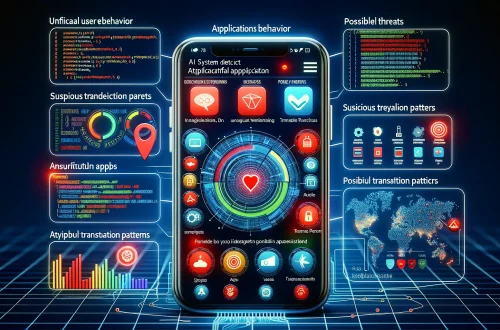In modern teaching, teachers often introduce at least one math game, because they are a powerful and diverse tool that completely changes the approach to studying one of the most complex and abstract subjects, as they build a bridge between dry theory and real practice, turning rote memorization into something more.
Using game mechanics in the education process, or gamification, helps not only to increase students’ motivation but also to activate cognitive functions that traditional teaching methods often do not use.

The main point of math games is their ability to create a situation for using knowledge, because instead of just solving problems on paper, a student becomes part of an interactive environment where they must use logic, quick reactions, and analytical skills to reach a specific goal.
- This method activates a person’s inner drive and personal motivation, which is a far more powerful and lasting reason to learn new skills than external rewards like receiving good grades or praise from others.
A child participates in games because the activity is inherently interesting and engaging, rather than because they are being forced, and this helps to build a positive relationship with mathematics, overcoming “math anxiety” and removing the fear of failure.
Teaching Principles and Benefits
| Principle | Description | Example |
| Engagement | Games get attention because of competitions, earning points, and getting achievements | The student becomes an active person who makes decisions and is responsible for the result |
| Instant Feedback | Games give immediate feedback, so students can quickly see if their answer is right or wrong and change what they are doing | After each turn in the game, the result is seen right away, which helps to avoid learning the wrong steps |
| Developing Cognitive Skills | Games train not only counting but also logical thinking, spatial imagination, and the ability to solve unusual problems | The game “Battleship” teaches how to work with a coordinate plane, which helps a student develop their spatial thinking |
| Personalized Learning | Adaptive algorithms in online games change the difficulty of the tasks to fit the student’s individual progress | A student who solves problems quickly automatically gets harder problems, so they do not get bored in class |
Examples of Offline Games
Before we talk about digital products, it is good to remember that game-like ways of teaching have been around for a long time, and even without technology, you can make the process more interesting.
“Math Bingo” where each player gets a card with math problems written on it while a leader pulls out small barrels with the answers; players must quickly find the right problem and cover it with a chip.
This game is perfect for practicing basic math operations like addition, subtraction, multiplication, and division, as it trains quick counting and recognizing numbers, and the element of chance and competition makes the process lively and unpredictable.
“Battleship” on a coordinate plane where instead of using letters and numbers like A1 or B2, you can use number pairs like (3, 5), which turns a game everyone knows from childhood into a good tool for learning the Cartesian coordinate system.
Students do not just memorize what the X and Y axes are, but they actively use this knowledge in practice by finding the opponent’s “ships,” which helps them develop spatial thinking and skills for working with a two-dimensional system.
“Guess the Number,” where one player thinks of a number in a certain range, and the others must guess it by asking questions that can be answered with “yes” or “no” or “bigger/smaller.”
This game seems simple at first, but it is great for training logical thinking, the ability to divide intervals, to analyze information, and to make guesses.
Games from the Mind Elevate App
Rocket Order
- Calculation: They must quickly and correctly solve several equations.
- Comparison: They must compare the results with each other.
- Sorting: They have to put them in the correct order.
All of this happens under time pressure, which trains information processing speed and multitasking. This game is perfect for practicing topics about the order of operations and comparing numbers, which helps to build number sense.
Space Order
This game focuses on thinking flexibility and teaches students to see the big picture, so they can develop the following skills:
- Cognitive flexibility: The ability to quickly switch between different types of data, such as numbers, percentages, and objects.
- Number sense: An intuitive understanding of the relationships between different amounts.
- Quick decision-making: The ability to evaluate and sort data in a short time.
Crystal Bonds
This game is a great example of associative learning, which helps to make a connection between a problem and its answer; its method is based on:
- Accuracy and attention: The task needs careful matching.
- Visualization: The “glowing chains” element creates a good feeling about solving problems.
- Skill automation: Repeating the matches many times helps to move the knowledge into long-term memory.

Frequency and Integration into the Curriculum
To get the most from math games, it is very important to use them often and in a planned way, because the ideal amount of time to play can depend on the student’s age, the topic they are learning, and the specific goals of the class.
- You can use these games for five to ten minutes every day as a quick warm-up at the start of a lesson to prepare students’ minds for a new topic, or they can be used to finish a lesson and help students remember what they have learned.
- Many teachers like to have a weekly session for twenty or thirty minutes that is only for math games, which is a good way to review skills that were taught earlier in the week and to make sure students remember them, as this also gives students a chance to improve their high scores and to have a friendly competition with their friends.
- For a student who is having trouble with a certain skill, like multiplication, a game that focuses on that skill can be given as extra practice, while for students who have already mastered a topic, games can be a special activity that gives them a fun challenge that keeps them from getting bored.
Use It Freely
After all, math games are not just a useful tool, but also an evolution of the educational process, since it is statistically proven that they break the usual routine before students’ homework and act as a warm-up during class. Such games help to develop not only numeracy skills, but also key skills like logic, critical thinking, the ability to make quick decisions and adapt.
Using these ones, we can raise a generation that is not afraid of numbers, but knows how to work with them perfectly.






